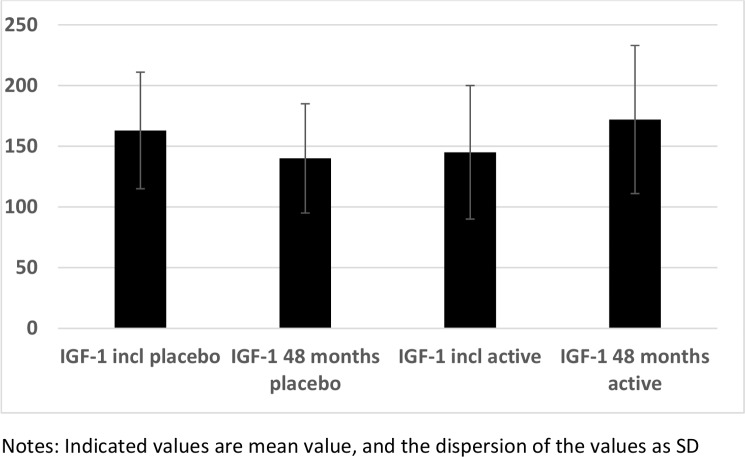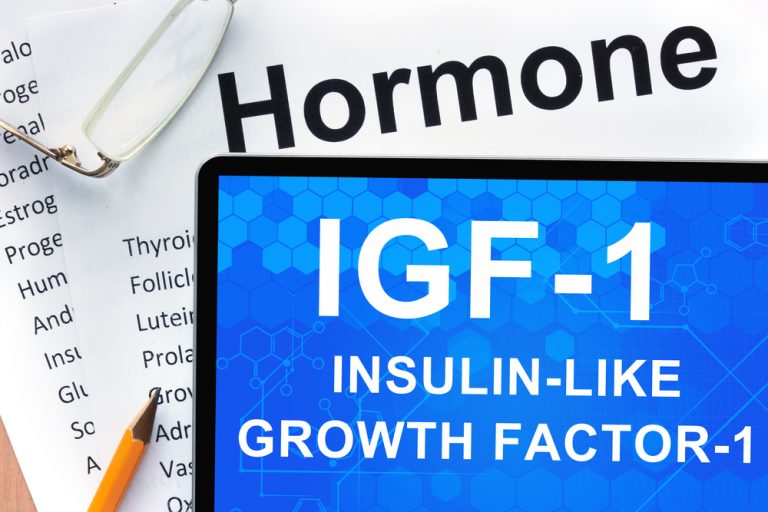IGF-1 is a key signaling molecule associated with growth hormone (GH) that increases protein synthesis in skeletal muscle. Mice modified for IGF-1 expression showed significantly faster muscle regeneration. Insulin-like growth factor-1 (IGF-1) is mainly produced in the liver in response to growth hormone bursts, but is also produced locally in various tissues in the body. It is a 7.6 kDa 2 70 amino acid polypeptide and there are six binding proteins that modulate IGF-1 activity.
IGF activity
The hypertrophic effects of IGF-1 administration are well documented in animals and in cell line studies. IGF-1 expression is increased in rats and in people doing strength exercises. Weightlifters had more IGF-1 than players playing volleyball. What's more, weight lifters had 27% more IGF-1 than non-exercisers. In addition, weightlifters had less myostatin compared to the control group.
Urban Alehagen et al. from the Faculty of Medical Sciences and Human Health of the University of Linköping, examined how the administration of selenium and coenzyme Q10 will affect IGF-1 concentration.
Study
443 older healthy participants living in a rural commune in the south of Sweden were randomly assigned for supplementation:
200 mg/day of coenzyme Q10 capsules and 200 mcg/day of organic selenium yeast tablets.
As such, selenium plays an extremely important role in the body, e.g. protects the heart, prevents the destruction of cells (including coronary vessels) against oxidative stress, protects hemoglobin and erythrocyte cell membrane against oxidation and further hemolysis. Selenium is also important for weight loss, it conditions the transformation of T4 (thyroxine) to T3 (triiodothyronine). It is also a regulator of the immune system.
Regarding coenzyme Q10, one study found that administration of 300 mg Q10 daily had an effect on patients with coronary artery disease, there was less TNF (tumor necrosis factor) - a marker of inflammation, and the activity of antioxidative enzymes (superoxide dismutase, catalase was higher) and glutathione peroxidase).
Results
In the intervention group after 48 months, a significant increase in IGF-1 concentration (from 154 to 183 micrograms/L) was noted, while in the placebo group - a decrease in IGF-1 concentration (from 166 to 144 micrograms/L).

Commentary by Urban Alehagen et al. seems incredibly optimistic to me. People aged 76.1, taking statins, diuretics, beta-blockers, angiotensin converting enzyme (ACEI) inhibitors, have higher IGF-1 levels than those aged 30 years. Meanwhile, the levels of growth hormone and IGF-1 are dropping drastically after 18 years of age!
IGF-1 standards by age
- For 18-year-old 170-640 ng / mL
- For 30-year-old 117-321 ng / mL
- For a 40-year-old 106-277 ng / mL
According to ESAP 2015 standards, persons aged ~ 76 years should have an IGF-1 concentration of 57-172 ng / mL (minimum - maximum range). I certainly won't believe that the administration of two compounds had such an effect on IGF-1 concentration (increase by 18.8%) and that these elderly people could have had such a high IGF-1 concentration at baseline. Well, if it were confirmed, we have a wonderful mixture, more effective than funds from the black market and the gray market.






